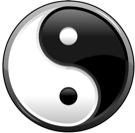A report from the National Institutes of Health (NIH) reports “that many well-designed studies have found that acupuncture can help with certain conditions, such as back pain, knee pain, headaches and osteoarthritis.” Research includes various scientific approaches to validating and measuring the effects of acupuncture including MRI studies, biochemical and bioelectric analysis and clinical trials. The NIH also reports, “Studies have found it to be very safe, with few side effects.”
In the report, researchers at the NIH question whether or not attempting placebo controlled trials is an effective approach to measuring the efficacy of acupuncture. Dr. K. J. Sherman, an NIH researcher at Group Health Research Institute in Seattle, Washington notes, “I don’t really think you can come up with a great placebo needling.” Dr. R. E. Harris, an NIH researcher at the Chronic Pain and Fatigue Research Center in Ann Arbor, Michigan notes, “It’s hard to design placebo-controlled studies of acupuncture when we don’t understand what the active component of the intervention is.”
NIH researchers also question the validity of sham acupuncture control groups. Dr. Harris’s research was able to prove that although sham acupuncture (using non-acupuncture points for a control group) and true acupuncture reduce pain in fibromyalgia patients, they “do it by different mechanisms.” Dr. Harris’s research showed that differing mechanisms by which the pain relief was achieved was measured at the molecular level. This suggests that sham acupuncture may superficially cause pain reduction but that it is not scientifically achieved by the same mechanisms as true acupuncture. Dr. Richard L. Nahin of the NIH’s National Center for Complementary and Alternative Medicine states, “If you look at some of the data, what you find is that sham acupuncture and true acupuncture both produce some pain relief in whatever condition they’re looking at. But while both treatments turn on areas of the brain, they turn on different areas of the brain.” Dr. Sherman notes, “there’s no place on the back, if you have back pain, where you can say you have a great control, so I don’t think that’s a really solid idea.” The researchers recommend acupuncture as a treatment modality but suggest that future research needs to reconsider attempts to use placebo and sham control groups.

Reference:
Contie, Defibaugh, Ewsichek, Latham and Wein. Understanding Acupuncture Time To Try It? NIH News in Health. February 2011.

